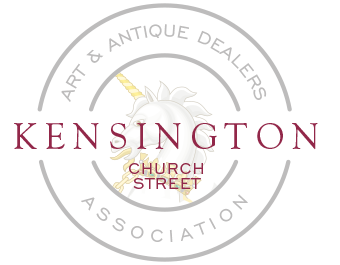“From my small suburban garden, I have been entertained by a nesting pair of Great Tits, flying backwards and forwards, feeding and tending to their young that have chosen the unlikely home of an unused terracotta amphora vase (with a very narrow neck) from which they somehow disappear and emerge regularly throughout the day. It struck me that especially in times like these, the natural world and indeed our own pets can provide a great deal of pleasure and comfort.”
“It reminded me of the beautiful and rare 19th century porcelain group of nesting Finches, produced by Meissen, that we currently have in stock and has inspired the curation of our online ‘Lockdown Exhibition’ from our inventory of fine quality European porcelain and Japanese works of art, including new acquisitions that happen to include a great many animal forms.”
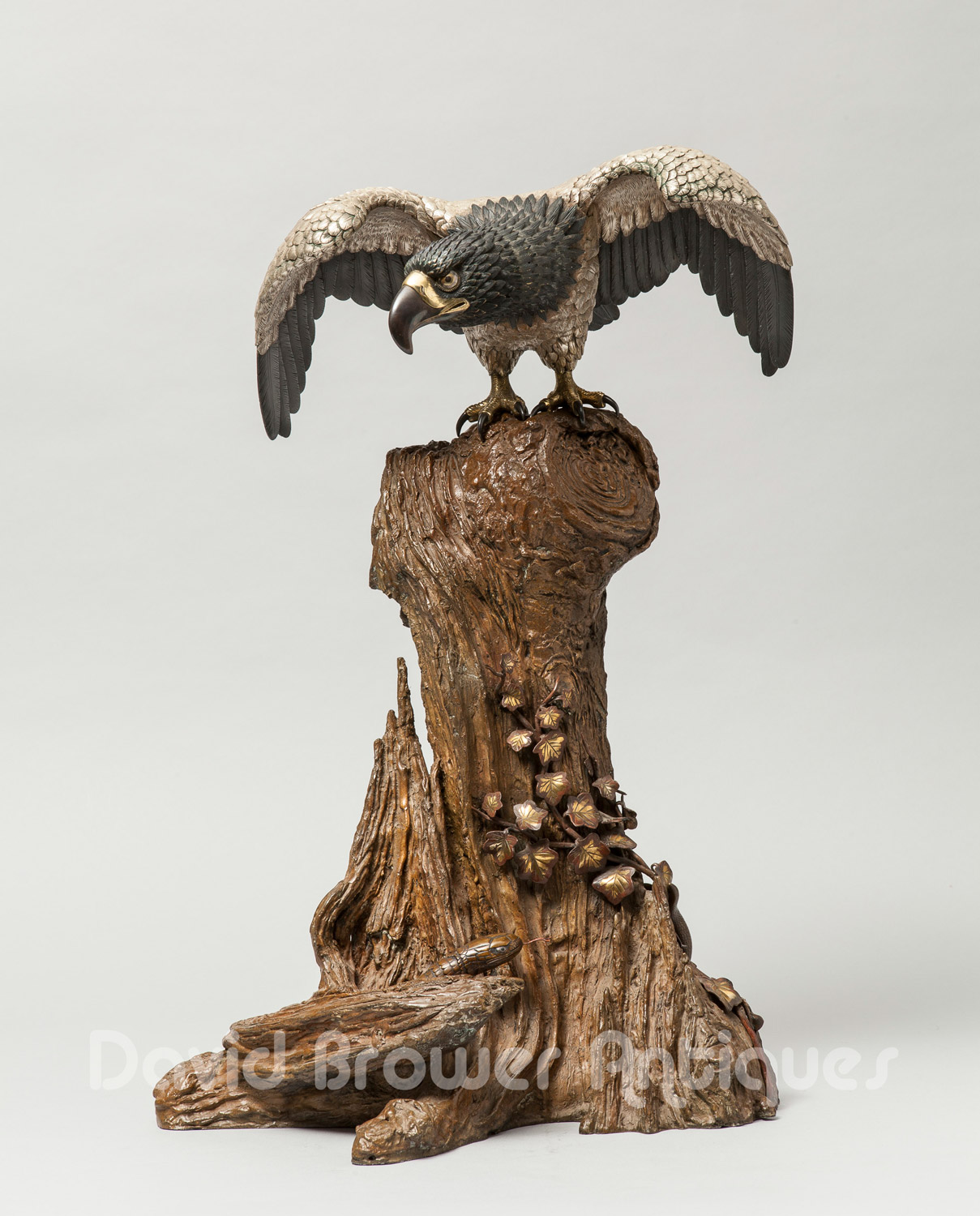
A Japanese jizai okimono of a hawk and snake, circa 1880, Meiji Period (1868-1912)
One of the most sought after and collected Japanese objects in recent decades, seem to be jizai okimono and yet they have possibly the least evidence concerning their origins. These realistically crafted figures of animals have articulated bodies and limbs that move in a lifelike manner. Documented models include birds, fish, snakes, lobsters, crabs and insects, as well as mythical creatures such as sea dragons. First produced around the earlier half of the 18th century (Edo period), Jizai okimono were conceived by the Myochin armour makers who excelled in iron forging, manufacturing these okimono (ornamental objects) as an alternative income to their traditional armour commissions. Evidence of the earliest dated pieces reside in Tokyo National Museum by Myochin Muneaki in 1713 and one by Myochin Muneyasu in 1753. Jizai okimono were exported overseas in the Meiji period (1868-1912), with the studio of Takase Kozan being a prolific producer. He utilised bronze and shibuichi (an alloy of copper and silver) and shakudo (a copper and gold alloy) in addition to iron, in order to make their pieces even more realistic. This rare example, a silvered bronze articulated hawk with gold, Shakudo and Shibuichi detailing is an incredibly unusual object, showing a natural progression, from the early beginnings of Jizai Okimono to the lavish techniques of the elite Meiji craftsmen who won great acclaim at world international exhibitions and even won appointments to the Emperor Meiji. The hawk’s neck is articulated and is constructed in a succession of incised and finely chiselled cylinders, each slightly smaller than the preceding one and pinned to the next to facilitate movement. Perched upon its rockwork base are applied leaves and foliage highlighted with gold detailing. Coiled around the base is a snake emerging from camouflage that is cleverly conceived in that it utilises both solidly cast sections and is in part articulated with a spring loaded tongue. Dating from the Meiji Period, it bears a silver signature plaque and is signed Suzuki Saku (forged by Suzuki).
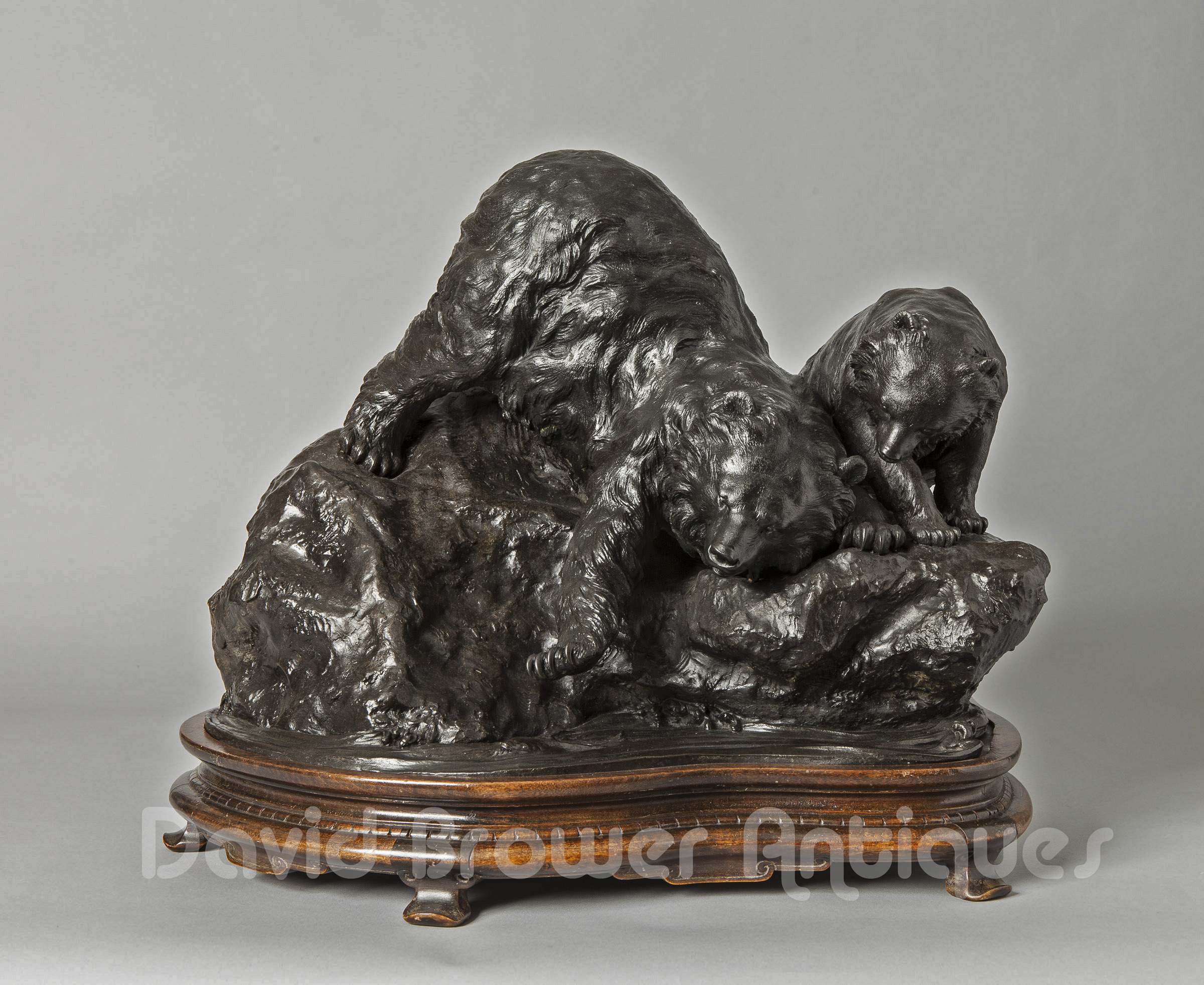
A large Tokyo School bronze group of a bear and cub
Perched on rocky outcrop overhanging the riverbank as the adult tries to catch a passing fish with her cub watching in anticipation.
Signed by the artist, Meiji Period (1868-1912).
53cm wide by 43cm high
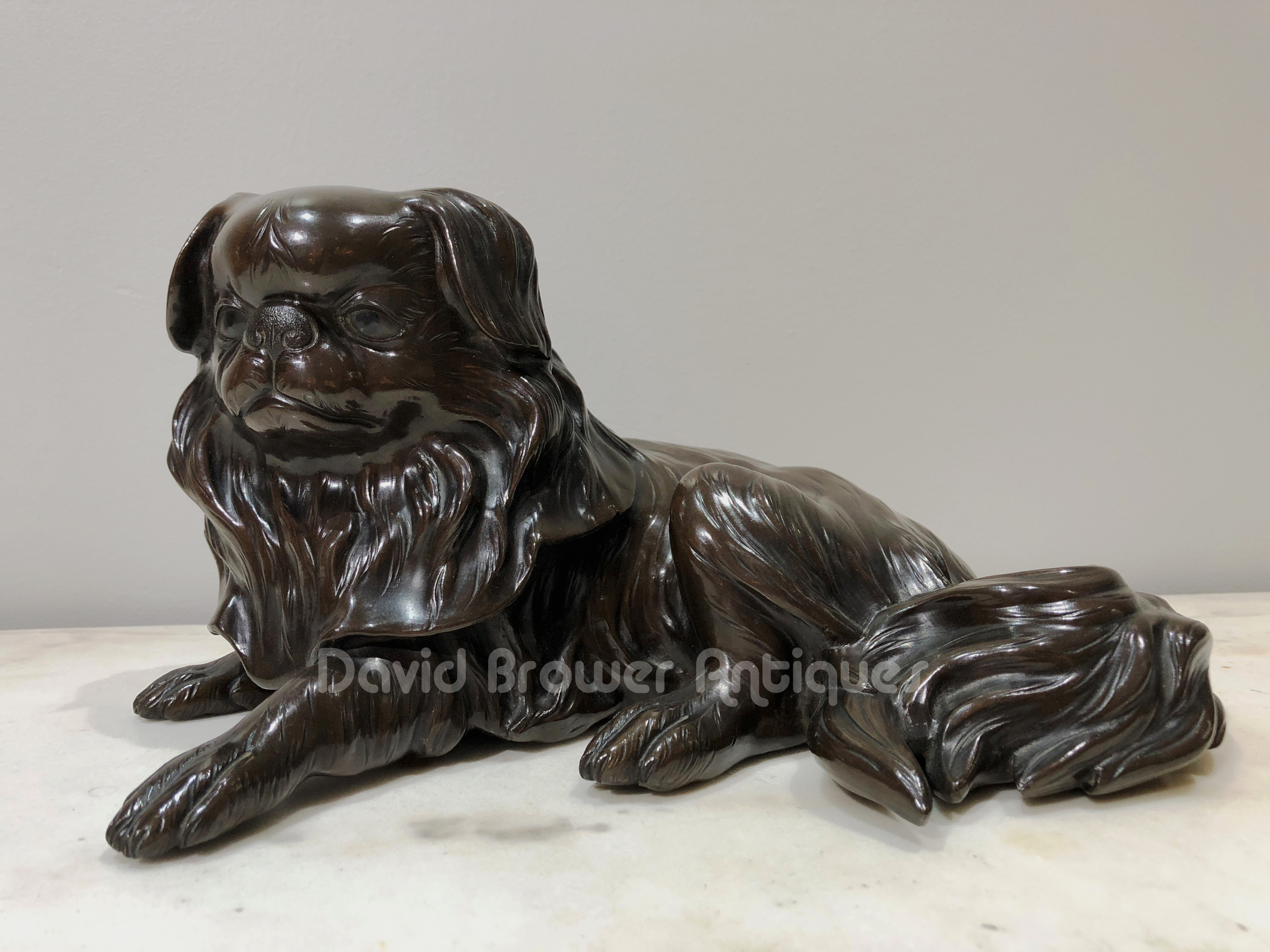
Often mistakenly referred to as a Pekinese, the Japanese
Chin is a toy Spaniel breed associated with Japanese
nobility. This fine example, in bronze, has been
beautifully patinated with shakudo eye detailing (an alloy
of copper and gold).
On its underside it bears a seal that reads ‘Genryusai
Seiya zo’ ('made by Genryusai Seiya', a highly regarded
Tokyo School sculptor producing quality figures of
animals and scenes depicting Japanese life).
Circa 1880,
Meiji Period
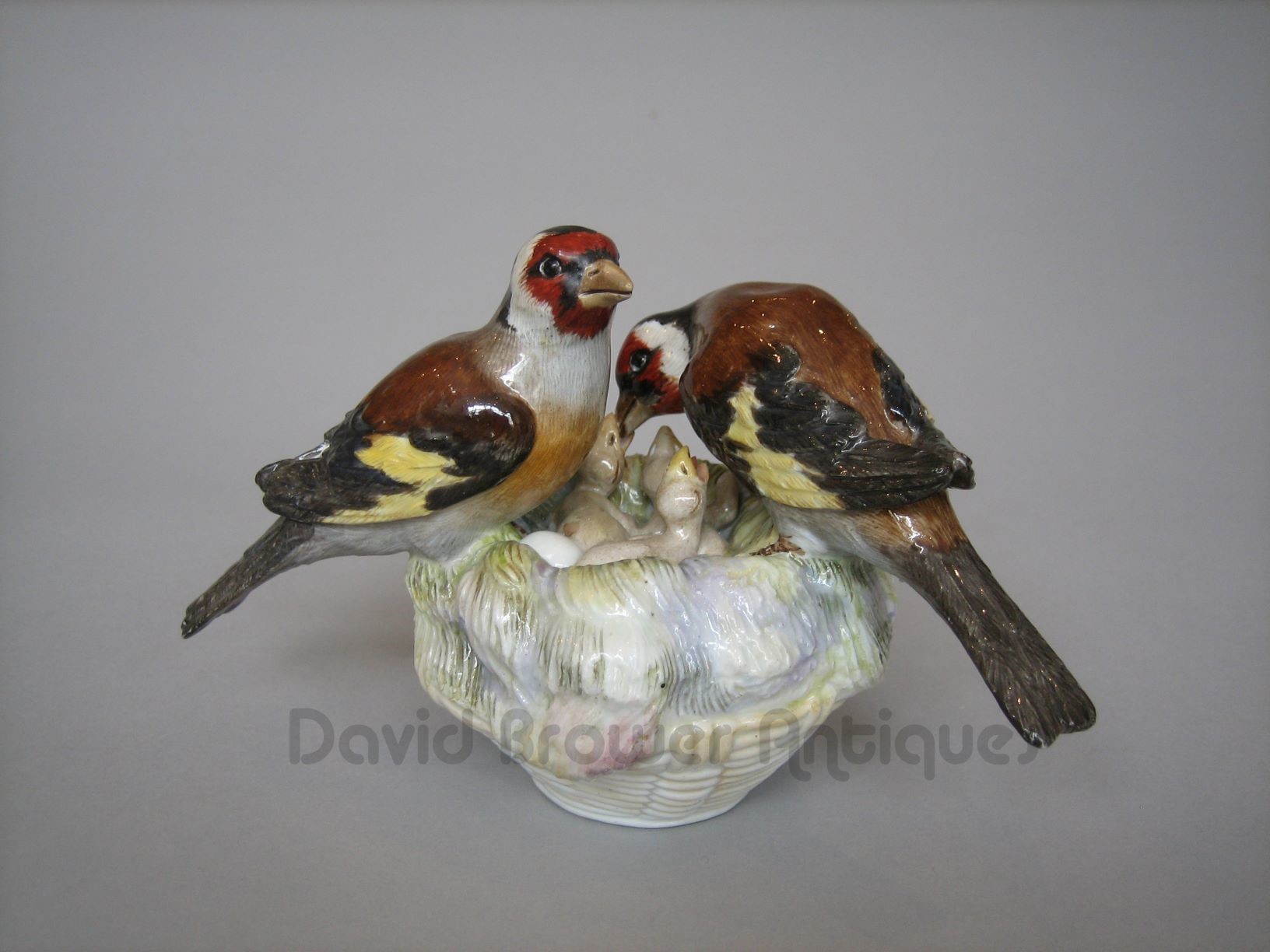
A rare Meissen porcelain group of nesting European goldfinches
Feeding their young in the nest, 14 cm tall, circa 1890
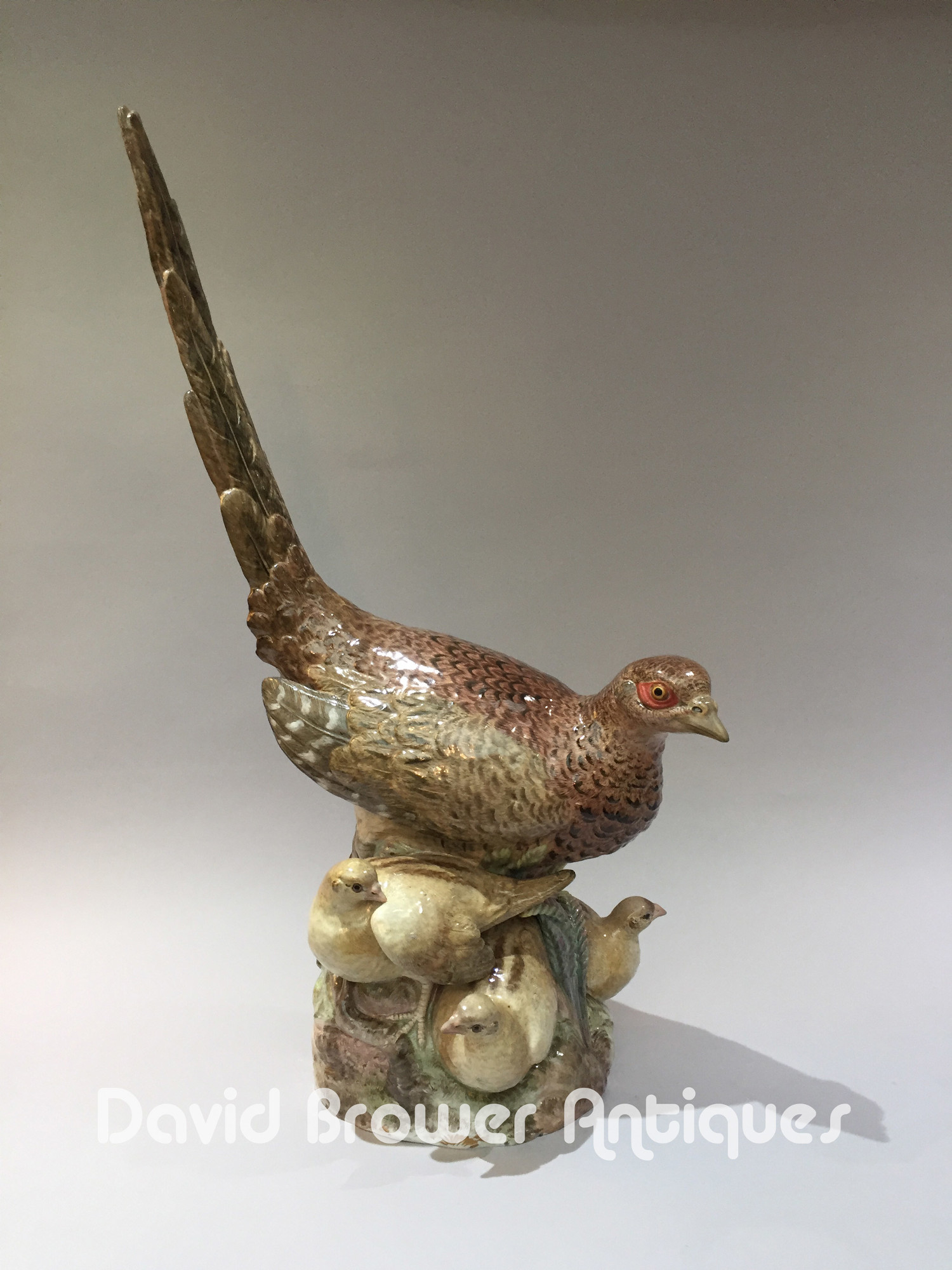
Very rare Meissen porcelain sculptural group of a pheasant and her chicks
First conceived for Augustus the Strong’s porcelain menagerie, to adorn the Japanese Palace where major remodelling work had begun in 1728. This large porcelain commission was intended to compliment his live collection at Moritzburg and his stuffed specimens too. However, he was never to see completion of the project as he died in 1733. Despite this, progress on the project continued and in 1735 half of the 910 vases ordered were delivered for display, together with approximately 300 large scale Meissen porcelain animals including the pheasants. Many of these pieces can be seen today in the Zwinger Museum further down the Elbe River from the Japanese Palace in Dresden.
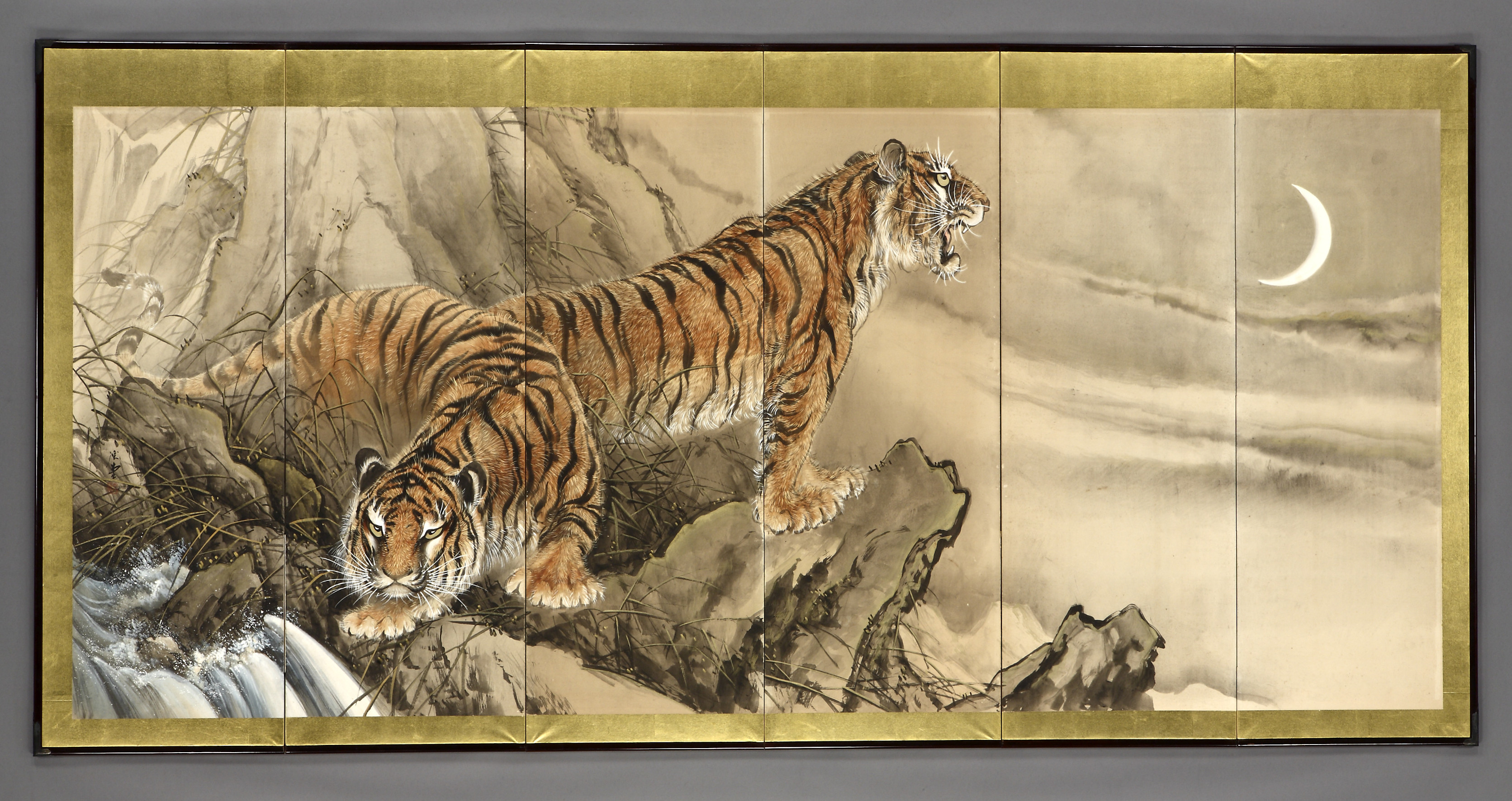
A superb pair of large 6 fold Japanese paper screens depicting 2 tigers at a mountain stream whist the other portray them hunting.
Taisho period (1912-1926).
Width 303cm by 149cm in height (each)
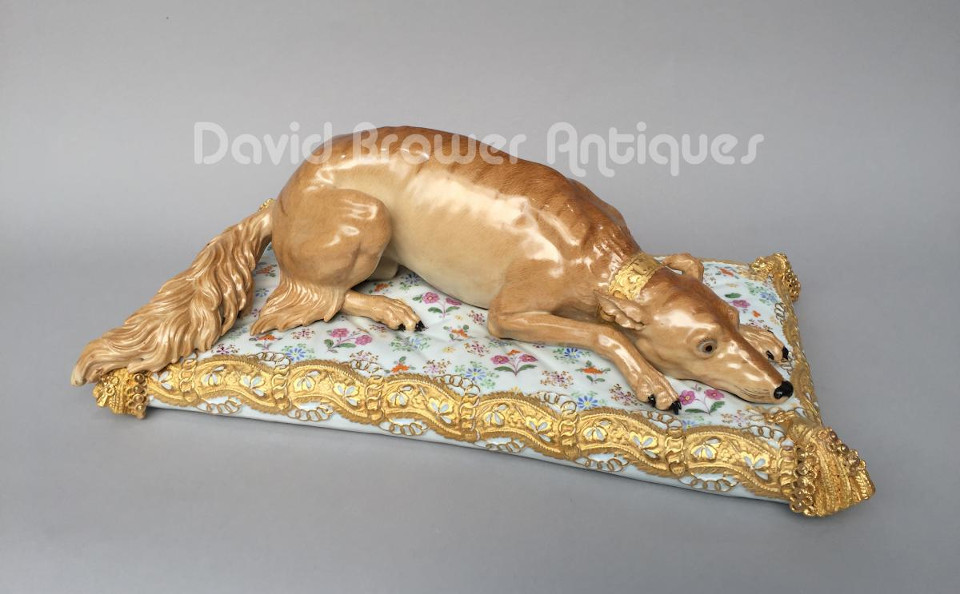
Meissen porcelain 'Russischer Windhund'
The “Russischer Windhund” was first modelled by Johann Joachim Kaendler and is recorded in his work reports, June 1766, where he notes… “Modelled a large dog to a drawing sent from Moscow, scrupulously following the description enclosed”.
The porcelain composition was a tribute to a pet dog and most probably commissioned by Count Grigory Orlov (1734-1783), consort to Catherine The Great (1729-1796), who had previously led the coup against her then husband Peter III (1762), ensconcing her to the Russian throne.
The Meissen manufactory produced a number of items for Catharine II and her patronage to the manufactory undoubtedly aided its history and legacy with the “large Russian order” of 1772. This piece however has often been misattributed to Zemira, her Italian Greyhound. It is in fact another one of her pet dogs, possibly a Saluki, and is also the subject of a painting by Johann Friedrich Grooth (1717-1801), lounging upon a plush red upholstered couch.
Beautifully painted and detailed, wearing a gold collar, this pampered dog, from the greyhound family, is represented in recumbent pose, upon a flower painted and gilt trimmed rectangular cushion with further gilded tassels.
43cm wide
Circa 1850.
